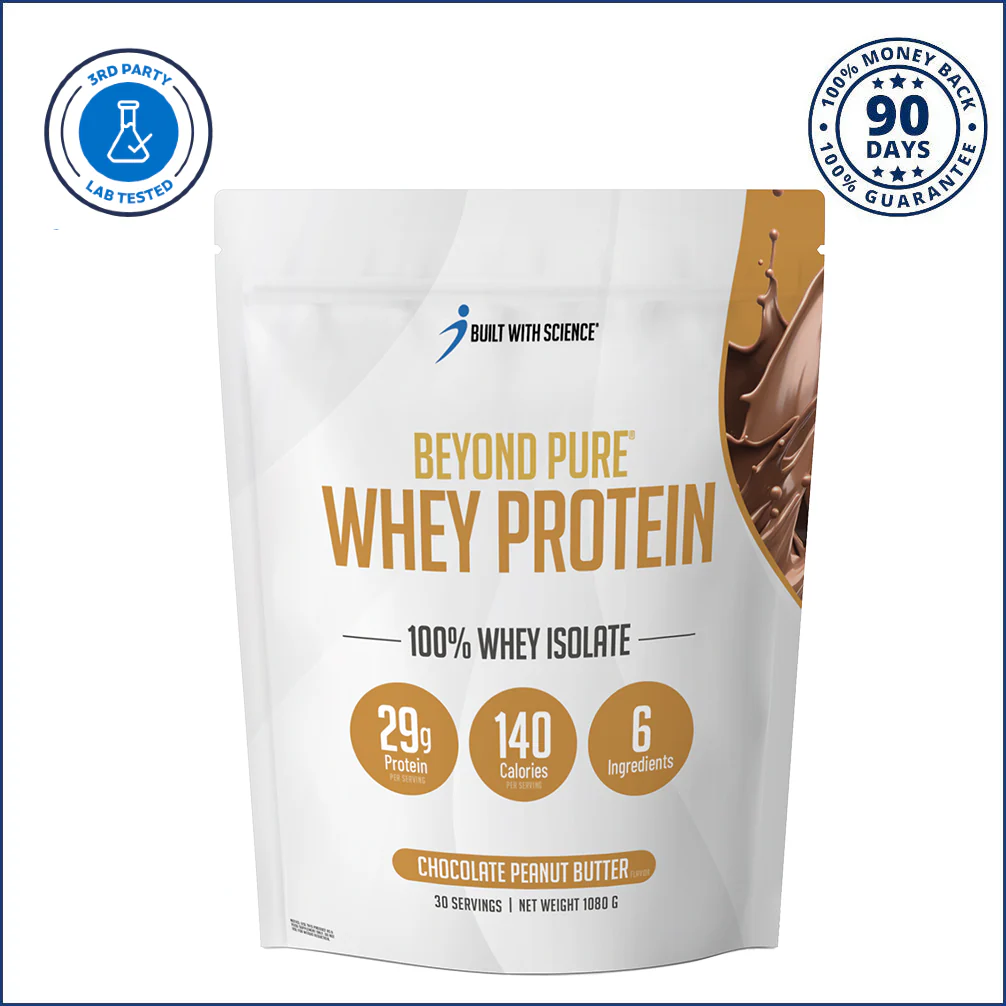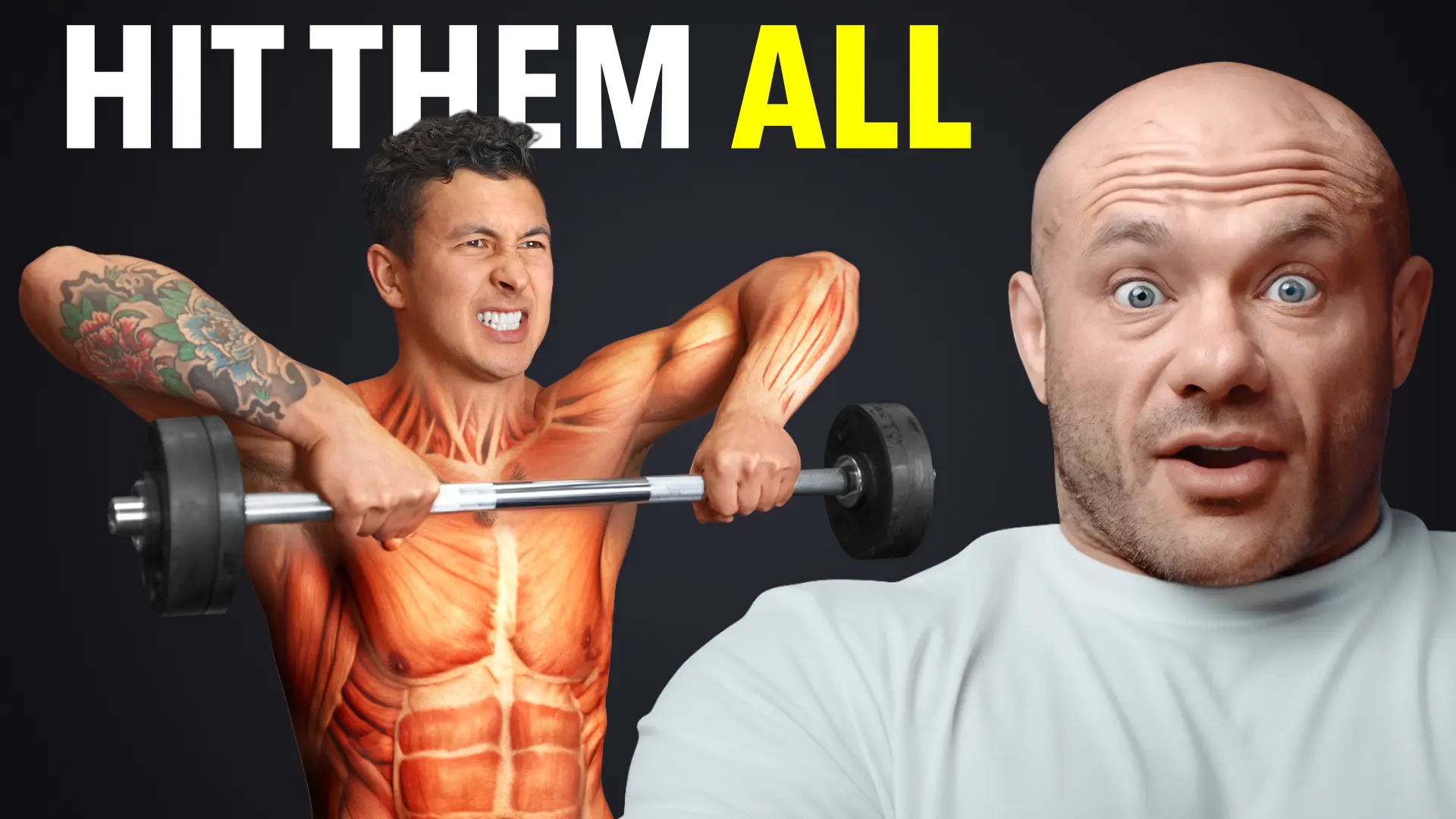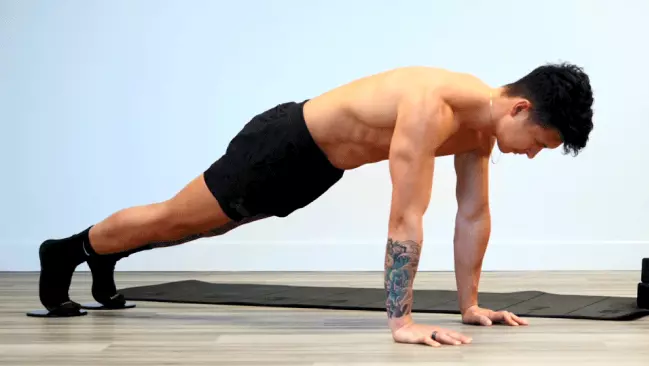
The Best Full-Body Calisthenics Workout Plan To Build Muscle
Stuck at home? No weights? No problem. I'm going to show you the best calisthenics workout plan that'll train your whole body - using only your body.
By the way: I really mean using only your body. All you'll need are common objects found in everyone's home. One of the beauties of bodyweight exercises is that you can use a few basic movements - and then progress with harder variations. In other words: you don't need to do a ton of exercises. You just need the right ones. And I'm going to show you which ones you should use for the best calisthenics workout plan you can use.
And because of the exercise progressions I'll show, this calisthenics workout is suitable for beginners, right through to advanced lifters. Also, be sure to stick till the very end for the easiest and most effective tip you've likely never even heard of!
I know you're really keen to read about the calisthenics workout. We'll get to that in a sec, but before that: if you're looking for a training program that'll help you set up every one of your workouts for optimal muscle growth (gym or no gym), I've got just the thing for you. Every BWS program takes you through a step-by-step, science-based process that'll get you to your dream physique - FAST. For more information:
Click the button below to take my analysis quiz to discover the best program for you:
↓
What's A Suitable Rep Scheme For The Calisthenics Workout?
For the majority of the exercises we go over in this calisthenics workout plan, you are going to perform 3 sets for each exercise. For the first 2 sets, you're going to use what's known as "RPE" to monitor reps performed.
RPE is a form of self-regulation, where you judge how hard an exercise is for you by using an "intensity scale". Many studies have shown RPE to be an effective intensity measurement during a resistance program.
The real scale of RPE goes from 6 to 20:
- 6: No effort
- 20: 100% max
Obviously, going by a scale of 6-20 is mega confusing. So, for the sake of this calisthenics workout plan, we're going to use 0-10 instead:
- 0: Nothing
- 10: I'm dead
For all your sets within the following calisthenics workout plan, you want to be around a 7-8 on the RPE scale. Meaning? Well, here's something you can reference. If you can do 10 push-ups max, then an RPE of 7-8 would translate into you actually doing 7 or 8 push-ups. It's as easy as that.
However, the last set is where we're going to do things a little differently. You're going to bring it to momentary failure. Many bodyweight exercises are high-rep simply because they don't use any load. However, it has been shown that you can get similar gains with low-load movements to high-load ones - so long as you bring it to failure.
What Every Training Program Needs For Maximum Growth
Here's something you need to know. An effective workout program - calisthenics workout (i.e., without the gym) or not (i.e., with the gym) - should take into account all major movement patterns. Why? Well, that's because doing so is the only way you can ensure that no muscle goes overlooked.
And there are 7 movement patterns that'll hit every muscle in the body. We'll use them to design our calisthenics workout program:
- Horizontal & vertical pushing: Works the chest, shoulders, and triceps
- Horizontal pulling & vertical pulling: Works the back and biceps
- Squats & lunges: Works the lower body (mainly the quads)
- Hinges: Works the lower body, but mainly the "backside" muscles (i.e., hamstrings, glutes, and lower back)
For each of these movement patterns, we'll try to identify 1-2 of the best exercises to include in our calisthenics workout plan. That said, only having the basic version of these exercises won't cut it. As you get stronger, your body will need harder variations to continue building muscle and getting stronger. Progressive overloading is easy to do at the gym since you can do more weight. But, imaginable, becomes much more challenging to do with a calisthenics routine - since you're only using your body weight.
But don't worry, because I'll show you how you can still continue challenging your muscles by using 3 levels of increasing difficulty for each exercise in your program. Let's dive into our horizontal pushing movements.
Horizontal Pushing
Push-Ups
It has been repeatedly shown that muscle activation with the bench press and push-ups are nearly identical. In fact, with the right progressions in place, research has also shown that you can increase both muscle size and strength with push-ups - just as much as you would with a bench press in the gym.
This makes it a great choice as the main horizontal pushing movement in our calisthenics workout plan. And will mainly focus on the chest.
Level 1 (Standard Pushup)
Level 1 for this movement will be the standard push-up. But there's something you need to be mindful of. Make sure that your hands are positioned just outside your shoulders and elbows - making a 45-degree angle. Doing so helps you maximally activate your chest on every rep.
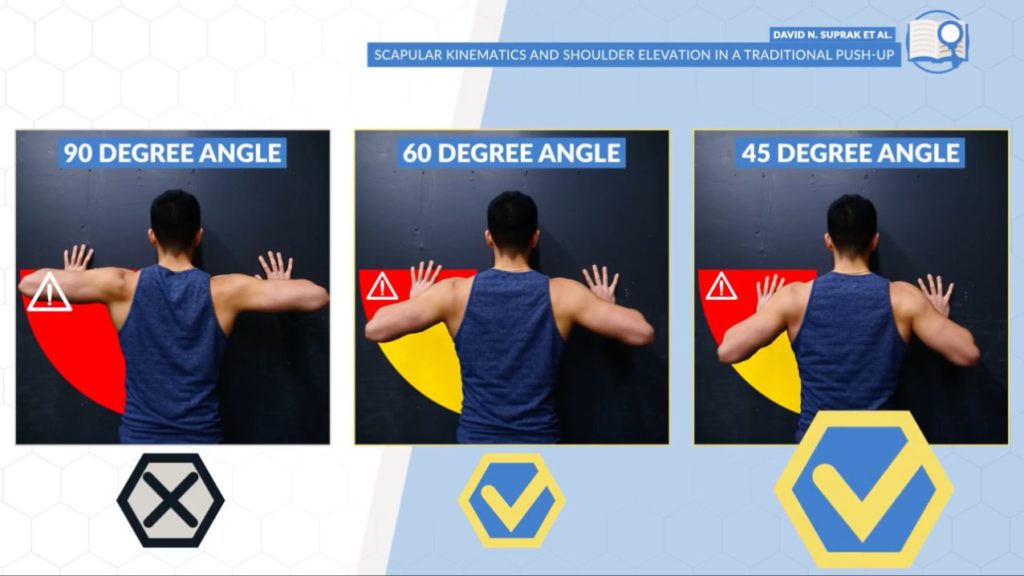
Level 2 (Hand To Hand Pushups)
Once you've mastered level 1, you can progress to level 2. This involves you coming down to one hand at a time. This places a greater percentage of your body weight on that working side, which increases the difficulty of the movement. Push back up using that one hand, and then switch to the other hand for the next rep.
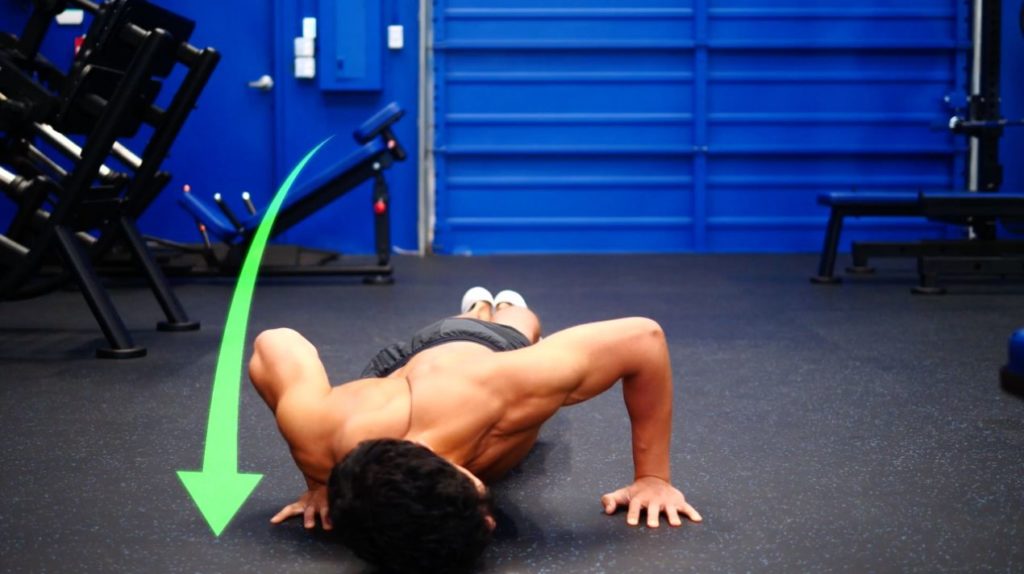
Level 3 (Single-arm Extended Push-up)
Level 3 requires you to now extend one hand all the way out to one side and allow your body to come down towards your hand. The extension of your arm now places an even greater load on your one hand than in level 2. Perform all your reps on one hand before switching the extended arm. And if these are becoming too easy? Then you can place your extended hand on an elevated object, like a book. This will put greater demand on your working muscles.
Vertical Pushing
Now, let's move on to the vertical pushing movements you should do in your calisthenics workout program.
Incline/Vertical Push-Ups
During pushing movements, stress is taken away from the chest and transferred to the shoulders as the arms move closer toward your head. We'll apply this finding to our first exercise to focus on the vertical pushing category; to really focus on developing the shoulders. An additional note before you start. You should realize that it's not just your weight being transferred to your shoulders as your feet rise. But, you'll also be lifting a significantly higher percentage of your body weight.
Level 1 (Parallel Incline Push-Up)
Start by placing your feet on an object such that your head and feet are at an equal level. Meaning? You should be parallel to the floor. Be mindful of your core. One of the most common mistakes people make with this exercise is allowing their hips to sag more so on these compared to regular push-ups.
Level 2 (Feet Higher Than Head)
Level 2 will now increase 2 things:
- Demand placed on your shoulders AND
- The percentage of your body weight
To perform this exercise, all you need to do is elevate your feet on an object, such that they are now higher than your head.
Level 3 (Elevate Higher!)
And again! To up the difficulty once more, you'll want to find an object higher than you used with level 2. You can continue doing this until you're almost vertical. The higher you go, the more tension will be placed on the shoulder muscles. And the harder the exercise will become.

Dips
Yes, I know what you're thinking. Dips aren't really a vertical or horizontal pushing movement. But still, they are a pushing movement. And easily one of the best bodyweight movements you can do in any calisthenics workout program (or any program, for that matter).
Level 1 (Knees Bent)
Here's how you're going to perform the exercise:
- Find a couch, bench, or simply position 2 chairs behind you
- Turn your hands outwards and put your legs in front of you, with your knees bent; this is the starting position for level 1
- Keep your chest and back upright as you bend your elbows to drop your butt toward the ground
- Drop down until your upper arms are parallel to the ground, then press back up
Level 2 (Legs Straight)
The straighter your legs are and the further your heels are from your butt, the harder the move will be. That's because you will be lifting a higher percentage of your body weight. So, in level 2, you will straighten out your legs to increase the difficulty.
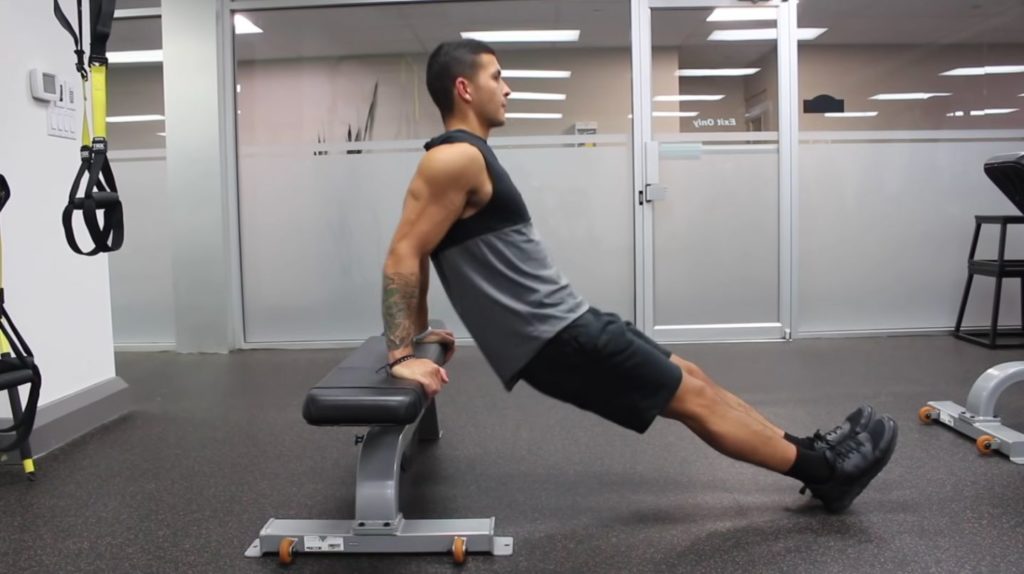
Level 3 (Legs Elevated)
In level 3, we'll further increase the demand. After your legs are straight, you'll want to elevate your feet onto another bench or chair. And at this point, if you have access to dip bars, you can actually progress to those as well.
Horizontal Pulling
Australian Pull-ups
Australian pull-ups are among the best movements that people don't do enough of in any calisthenics workout plan. Like the bent-over row, you can expect this exercise to train the entire back. These are easy to set up; you can either use a:
- Smith machine OR
- A barbell inside a rack
Either way, you'll want to set it at a height where your arms can be fully extended, and your back a few inches off the ground.
Level 1 (Knees Bent)
You may be tempted to skip right through level 1 — and straight to level 2 — of your calisthenics workout. And you're not alone. Many people will underestimate how hard these can be since your feet are on the ground. Well, the truth is that they can be pretty hard. That's why level 1 has you starting with your knees bent. Note that they should be at an angle - so your knees are at about a 90-degree angle at the top.
Level 2 (Legs Straight)
Level 2 will have you just extend your legs. This is going to increase the percentage of bodyweight you lift.
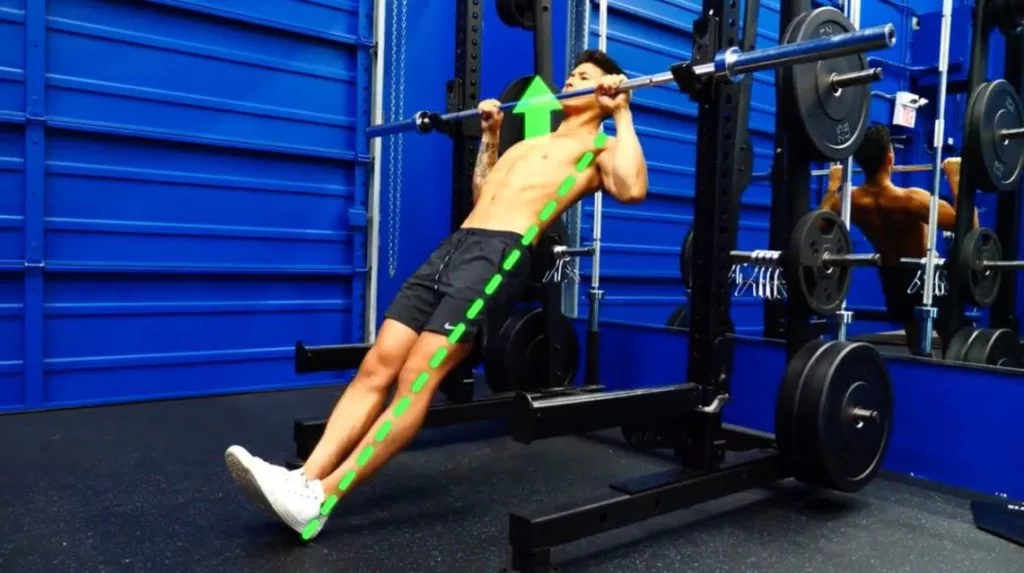
Level 3 (Legs Raised)
Is level 2 getting too easy? Then, at this point in your calisthenics workout progression, you're ready to turn the difficulty up. You'll do this by raising your legs onto an object. That's because doing this will further increase the percentage of bodyweight you're lifting. You can gradually use higher objects until your feet are at the same level as your hands.
How To Perform The Australian Pull-Ups At Home
Don't have access to the gym? Well, don't worry about having to cut this exercise out of your calisthenics workout program. You can achieve a similar setup right at home with 2 chairs and a broomstick (or a towel). Have the chairs facing behind you, with the backs turned at about a 45-degree angle. Be sure to set the chairs up on the carpet to avoid slippage. You should also take some time to ensure that your setup is secure. Safety first!
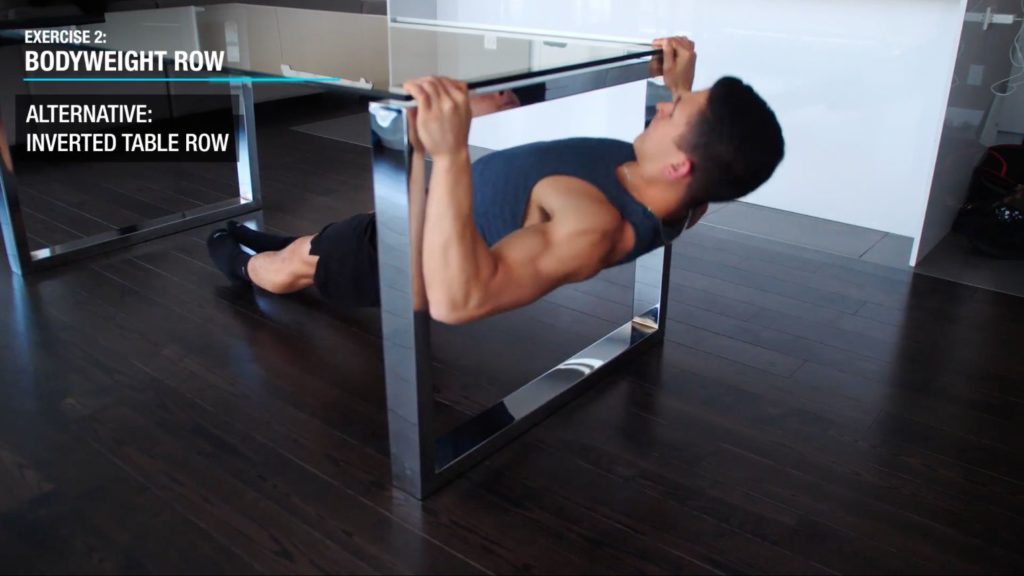
Vertical Pulling
Which exercise should we include for the vertical pulling category in your calisthenics workout? Well, the choice is obvious.
Chin-Ups
You're going to do chin-ups. These are easily one of the best exercises there are to do.
Level 1 (Negative Chin-Ups)
Level 1 in your calisthenics workout s going to utilize the eccentric portion of the movement. This is also otherwise known as the "going down" phase. The eccentric portion of a movement allows greater force to be produced. And is responsible for the majority of muscle damage, which leads to growth and strength.
For these, you want to start at the top of the movement. You then want to lower yourself down as slowly as you can - with control.
Level 2 (Jumping Chin-Ups With Paused Descent)
Mastered Level 1? Then you're ready to move on to the next level of your calisthenics workout. Here, you're going to perform the chin-up by jumping first, When you jump, you'll want an object that allows you to grab the bar with some bend in your elbows. Jump, then pull yourself to the top.
On the way down, you’re going to make 3 stops where you’ll pause; that's where your elbow gets to:
- 45 degrees
- 90 degrees
- 135 degrees
Level 3 (Full Chin-Ups)
Level 3 is where you do your full ROM, unassisted chin-ups. From here on, the easiest way for you to advance is through adding weight - only when needed, of course.
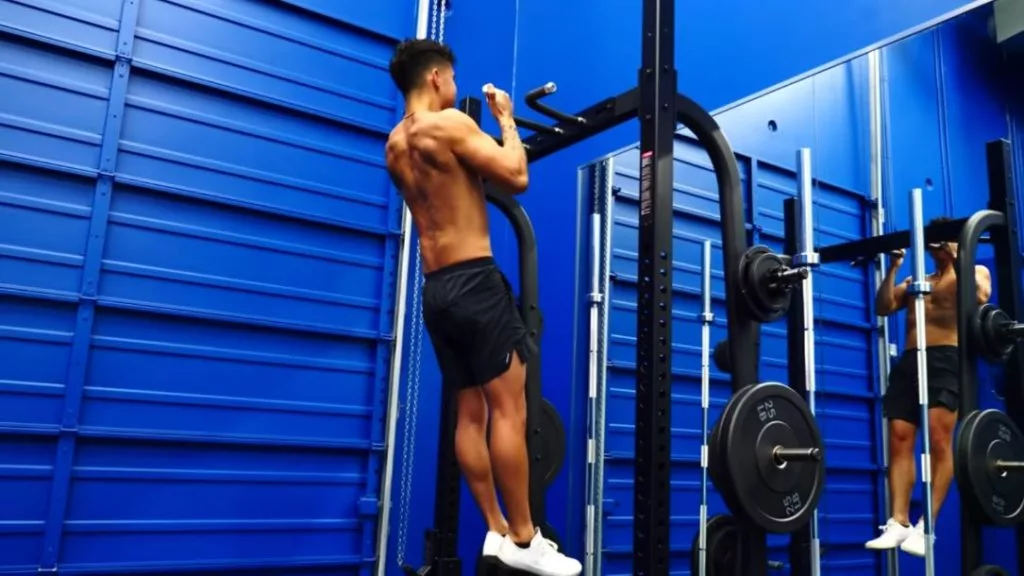
As you can tell, the exercise science field is constantly evolving. Applying the latest, best science-based practices that'll help you grow all your muscle groups to your training isn't the easiest thing to do. Thankfully, there are BWS programs. I'm constantly updating each of them to make sure that BWS members are always training in the most optimal way. For more information:
Click the button below to take my analysis quiz to discover the best program for you:
↓
Squats
A Quick Note On Squats
The most obvious choice for the squat category of your calisthenics workout program will undoubtedly be the body squats. However, squats can become fairly easy quickly. That's why we'll move on to 2 forms of one-legged squats in levels 2 and 3. A quick note on both before we begin:
- Pistol squat: Performed with one leg coming in front of the body. This requires the body to sit back, with the torso more upright. Consequently, this will place more emphasis on the quads.
- Skater squats: The opposite to pistol squats; here, one leg goes behind the body instead. This forces the body to lean forward more, which shifts the emphasis to the hamstrings.
These one-legged squats are essentially unilateral movements for the lower body. And just so you know: lower body unilateral movements have been found to efficiently increase lower body bilateral strength (i.e., squat max) if you can train with the same intensity.
Squats
Level 1 (Body Squats)
You're just going to do your basic body squats in Level 1 of your calisthenics workout routine. But don't be mistaken. Basic doesn't mean ineffective. Body squats are the foundation of all lower-body movements, after all. So, do take time to master your squats.
Level 2 (Assisted Pistol Squats & Skater)
Level 2 will see you doing assisted pistol squats and skater squats.
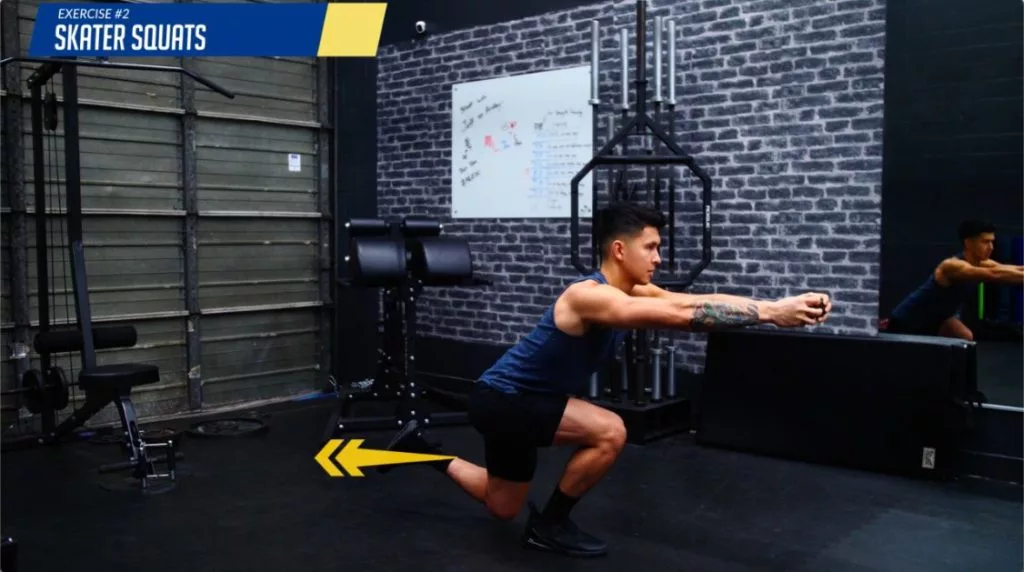
Note: these exercises can be challenging even with assistance. So, you don't want to rush. The best way to do these with assistance is with a TRX setup. Or, you can even use a towel wrapped around a pole of some sort. And if you're at home, you can use a countertop.
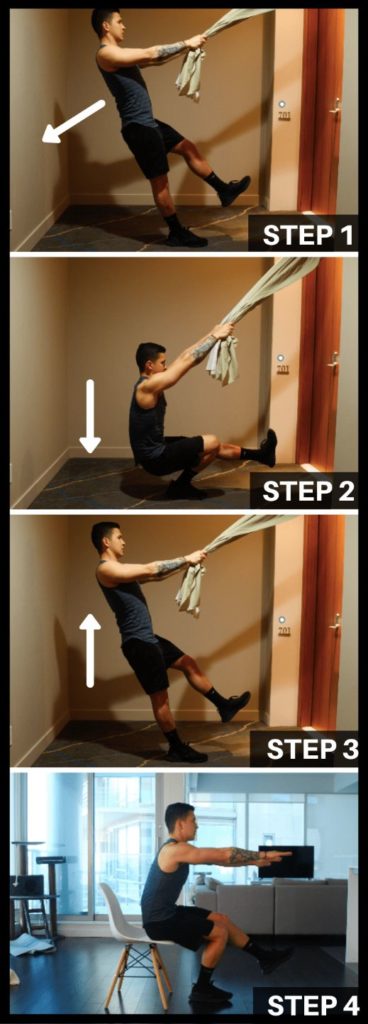
Level 3 (Unassisted Pistol Squats & Skater)
Level 3 isn't as much of a jump as it is a gradual progression. While you are mastering Level 2 (i.e., assisted pistol & skater squats), try to use less support gradually. Over time, you'll be able to knock these out with no help.
Split Squats
Lunges/split squats are another must-have exercise in your calisthenics workout for the legs. Lunges will train the entire lower body. They're also a unilateral exercise, which means that you can expect the extra bonus of improved balanced as well.
Level 1 (Basic Split Squat)
Split squats are basically lunges - but you don't alternate your legs. In other words: you work one side at a time. These are more difficult than lunges simply due to the lack of rest.
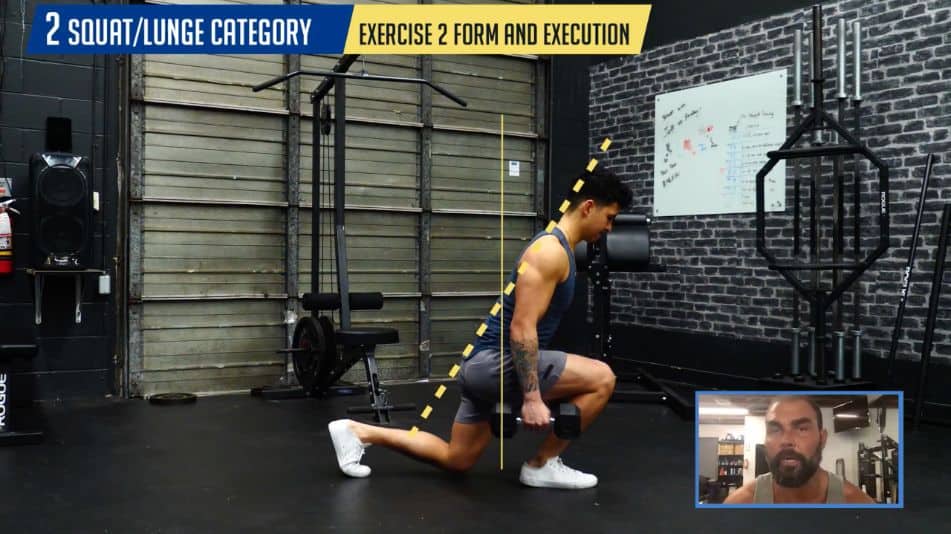
Level 2 (Front Foot Elevated Split Squat)
In the split squat, your front leg will be the primary working leg. By elevating it, you're increasing the ROM it goes through - which makes it work much harder than if it were on the ground.
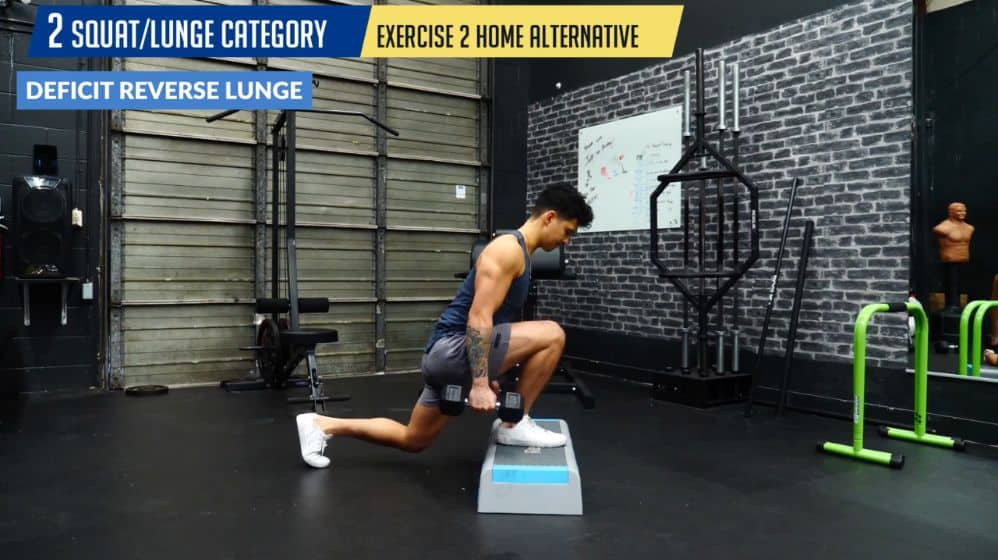
Level 3 (Back-Foot Elevated Split Squat/Bulgarian Split Squats)
In Level 3, you'll be doing a split squat with your rear foot. This exercise is also commonly known as Bulgarian split squats. Raising the back leg effectively takes its contribution out of the movement, which makes it significantly harder.
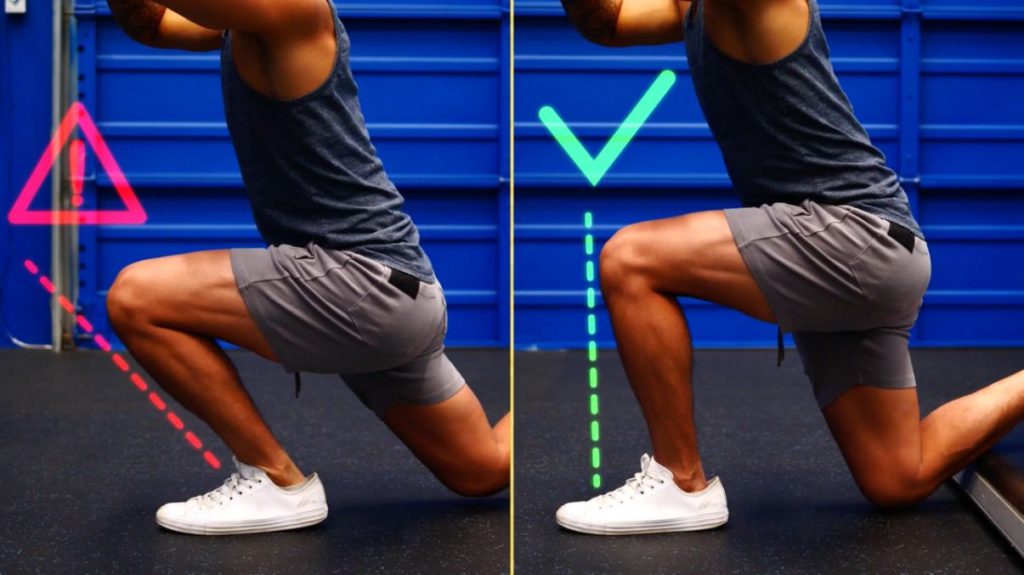
Hip Hinge
There are 2 great movements you can do to hit the posterior chain. A disclaimer before we begin: the first isn't a true hip hinge per se, since the hips stay fully extended the whole time. However, it still hits the hamstrings and the glutes like no other bodyweight exercise. So, without further ado, I introduce to you: the Nordic Curl.
The Nordic Curl
The Nordic curl involves anchoring your feet while you're on your knees - which allows your body to lower. This puts a tremendous amount of stress on your hamstrings and glutes, making this movement very popular in the strength and conditioning world.
You don't need to worry too much about volume with the Nordic Curl.
That's because a meta-analysis looking at the optimal volume for effectiveness concluded that consistent volume while focusing on improving the movement, is best. In other words: you should be focusing on being able to lower yourself both slower and also lower to the ground.
Level 1 (Assisted Nordic Curls)
First things first. Find an object you can place your feet under. An example would be the couch, although an alternative would be having a partner plant your feet. Level 1 will have you doing Nordic curls assisted by using an object to help control your body lower.
Level 2 (Unassisted Nordic Curls Partial ROM)
When you first start doing unassisted Nordic curls, you won't be able to lower yourself the entire way. You will hit a spot where your body will drop - essentially making them "partial ROM" Nordic curls/. So, as you progress, try to increase the distance you can go before "free-falling".
Level 3 (Unassisted Nordic Curls Full ROM)
Again, you will gradually progress to Level 3 rather than jump right into it. Continue with Level 2 by increasing the distance. And once you can do a full ROM, you will then focus on making your descent time slower (i.e., prolonging the time you spend lowering yourself to the ground).
Hip Thrust
The hip thrust is the best movement you can perform for maximal glute activation. Luckily, these are easy to perform just using your couch — so you don't have to worry about getting to a gym for your calisthenics workout (if you don't have access to one).
Level 1 (Hip Thrust With Two Legs)
Here, you'll be doing normal hip thrusts with both feet on the ground, Since these are unloaded, pause at the top of the movement - and really focus on squeezing your glutes.
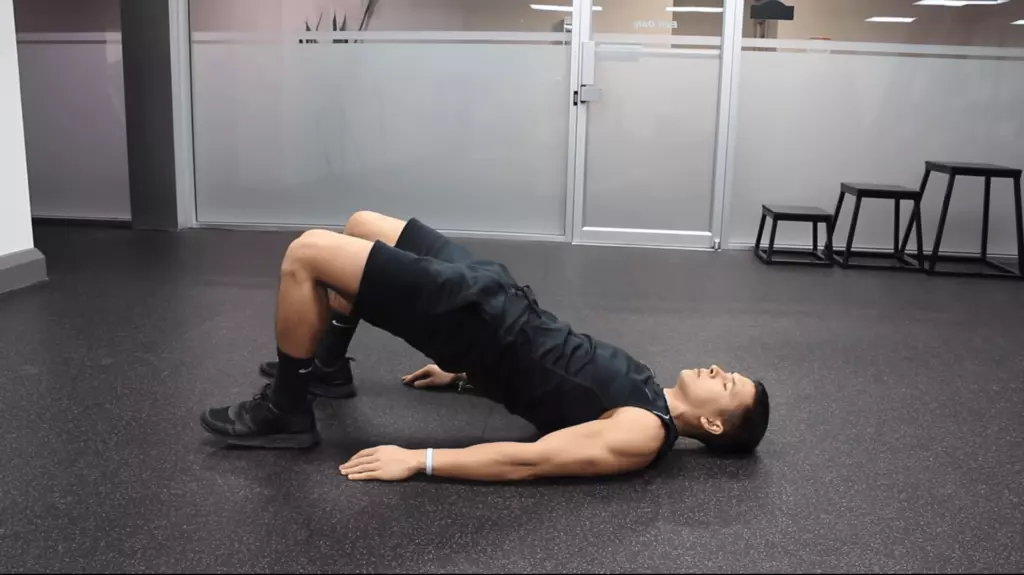
Level 2 (Hip Thrust With Single Leg)
Level 2 is going to have you lift one leg up. You're going to perform the hip thrust with only one leg. Obviously, this is going to increase the intensity.
Level 3 (Hip Thrust With Single Leg Raised)
Level 3 will, again, require you to use an object so that you can raise your foot. This will increase the range of motion your posterior chain stays engaged for - and will also increase the percentage of body weight you're lifting during the exercise.
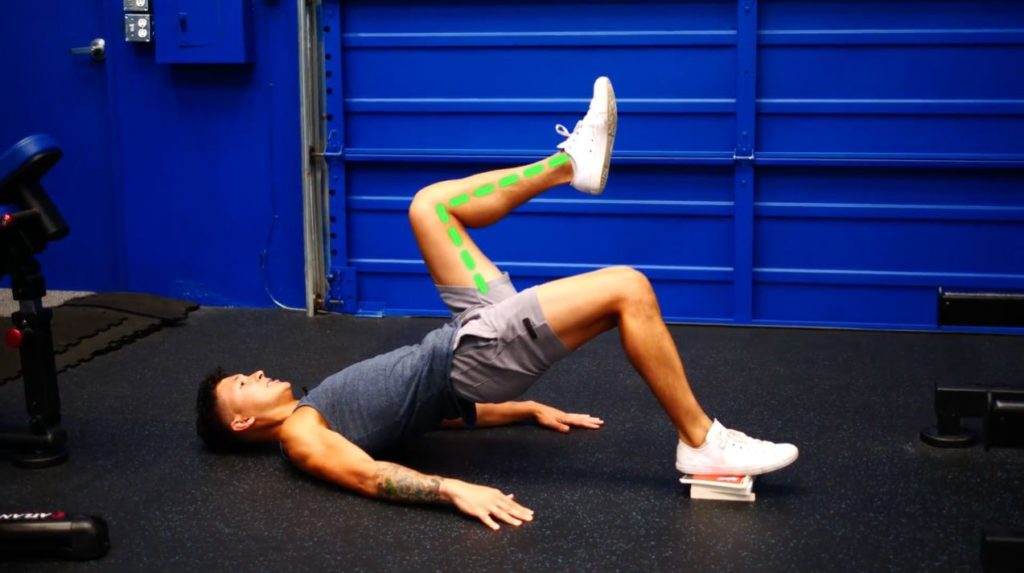
Your Calisthenics Workout Program Put Together
Your calisthenics workout program is going to use the above exercises in two sessions. The movements alternate between the upper body and lower body. This means you can jump from one movement right into the next. The sessions are to be performed in an EOD format, which means you’ll train 3-4 times a week.
Session A
Chair Rows
Squat
Superman Lat
Pushups
Nordic Curls
Session B
Decline Push-up
Lunges
Superman Lat
Dips
Hip Thrust
Don't Forget To Progressive Overload On Your Calisthenics Workout Routine
One important thing to note as you perform your calisthenics workout program. As with all training routines, you should make sure to progressively overload with time for maximum gains - yes, even if you're doing purely bodyweight movements (like in this calisthenics workout program). That means you should always aim to either increase reps, use harder movements, or slow down your tempo.
And for a step-by-step science-based program that shows you how to workout (with progressive overload, of course!) AND what to eat week after week in order to build muscle as efficiently as possible:
Click the button below to take my analysis quiz to discover the best program for you:
↓
Thanks for reading! As always, feel free to check out some of the past articles I've written that'll level up your at-home workout plan:

